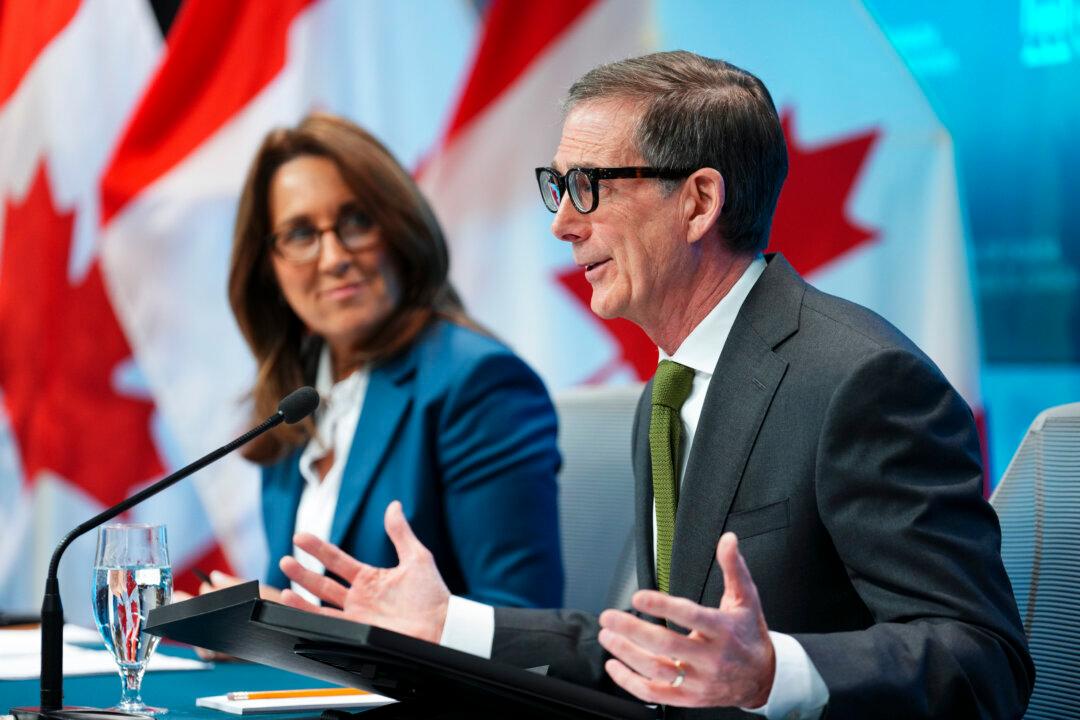The Canadian and American central banks are pulling out all the stops to support the economic recovery, with the latest move being their indications that they expect to hold interest rates near zero over the next few years. However, as the COVID-19 pandemic persists, the hoped-for sustained revival in consumer borrowing and spending is anything but certain.
In an unprecedented move on Sept. 16, the U.S. Federal Reserve said it doesn’t expect to raise its key interest rate until 2023, providing a very powerful signal that near-zero rates are here to stay for a long time.
A week earlier, the Bank of Canada had said, “The Governing Council will hold the policy interest rate at the effective lower bound [0.25 percent] until economic slack is absorbed so that the 2 percent inflation target is sustainably achieved.”
In Canada, the annual rate of inflation has been stuck at just 0.1 percent for the past two months. The 2 percent target is an international standard to keep price increases under control while promoting the economic and financial well-being of citizens.
Ever since the financial crisis, interest rates have been very low by historical standards, but there was always that element of uncertainty about when rates might go up. And they eventually did in the United States and Canada.
But now the U.S. and Canadian central banks have laid out their game plans very clearly to remove uncertainty and incentivize consumers and businesses to spend and invest—and take on risk. It’s an extreme use of one of the tools of their monetary policy—forward guidance.
Borrowing Less Appealing, Spending Impacted
Benjamin Tal, deputy chief economist at CIBC, told The Epoch Times that he doesn’t see a big pickup in consumer spending, as this really needs higher-income households to play their part. What has happened during the pandemic is that the rate of savings has gone up since incomes have been supported on the whole, but spending has fallen.
Lower-income households tend to spend that extra dollar but also have fewer dollars to spend, as lower-paying jobs like in retail and hospitality have been more impacted by the pandemic.
As for the housing market, an important contributor to consumer spending that’s been a big winner benefiting from near-zero interest rates, it’s soared from pent-up demand. However, Tal doesn’t see a return to the extended red-hot housing markets and talk of bubbles bursting from a few years back, as unemployment is still much higher than pre-COVID and the economy is still in the grips of the pandemic.
Tal notes that while mortgage debt is growing, debt from consumer loans and credit cards is diminishing.
“I suggest that the credit accumulation will not recover in a very significant way over the next six months, because the [pandemic] fear factor will be dominating again,” he said.
If consumer spending and business investment were to pick up, as policy-makers hope, this would lead to more jobs being created.
“Lower borrowing costs stimulate economic activity, which in turn boosts jobs and incomes, particularly for people with lower incomes,” said Bank of Canada governor Tiff Macklem in a Sept. 10 speech to the Canadian Chamber of Commerce in Ottawa.





